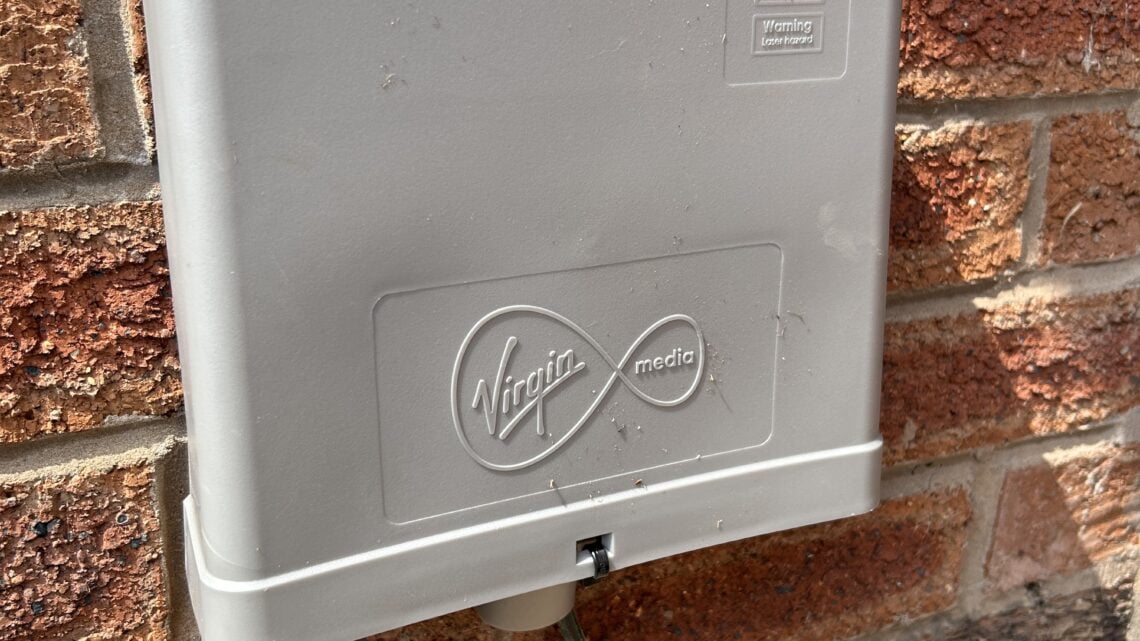
Your probably wondering why its taken so long for part 2 of this blog to come out well that’s because the install which was meant to take place on 20th June 2024 did not happen (more on that later) to quote Lord Sugar its been a bit of a shambles.
What has happened on 26th June was the pre install (which is meant to happen before the main internal install) which this blog will cover.
An update
Just to update what’s been going on since the 1st part of this blog was published a few weeks ago the first thing to note is one of the main selling points for me the Static IP address which I was told would be included with the upload speed add on is not going to be possible.
To Chloe’s credit when I asked her if everthing was going though ok including the static IP she did come back to me after checking with the team to say it would not be possible.
I have also asked again regarding the modem mode on the hub 5x (the included router with this service) as from what i have been hearing online its still not fixed Chloe is asking her team.
My install was meant to take place on 20th June and before then there is meant to be a pre install where sub contractors come out to install the fibre from the street to the property ready for the VM engineer to complete the internal install.
I did have someone from Virgin Media come out a week before the install date which i presumed was the pre install but it was just a survey where I showed the engineer where I want it installing into the garage and he said that’s fine.
The engineer said as its PIA (Physical Infrastructure Access) using Openreach ducts then they will be able to complete this on the install day.
I then presumed all would be ok for the install on 20th June.
20th June came and I was expecting the install to take place between 1 and 6 PM at just after 4PM a Virgin Media van pulled up and I went to greet the engineer.
The engineer had a look around and asked if they had been to do the pre install and if I had a brown box on the wall.
I told him no one had been apart form the VM enginner the week before but that was just a survey.
I was then told there was nothing he could do until the fibre is run from the street to the property as they can’t do that it has to be Comex 2000.
He did apologise and said he would let the team know to get the pre install work done.
I let Chloe know and she said this should not happen and had forwarded my message on to her manger.
I did get a phone call the next day to re book the install appointment and the earliest date they had was 5th July.
If you ever find yourself in this situation then check on Ofcoms site to see if your ISP is part of the automatic compensation scheme.
luckily Virgin Media is and as such they have to pay £6.10 per day for failed install until it’s live and that includes the day the install was meant to take place.
You can also claim for missed appointments and if the service goes down.
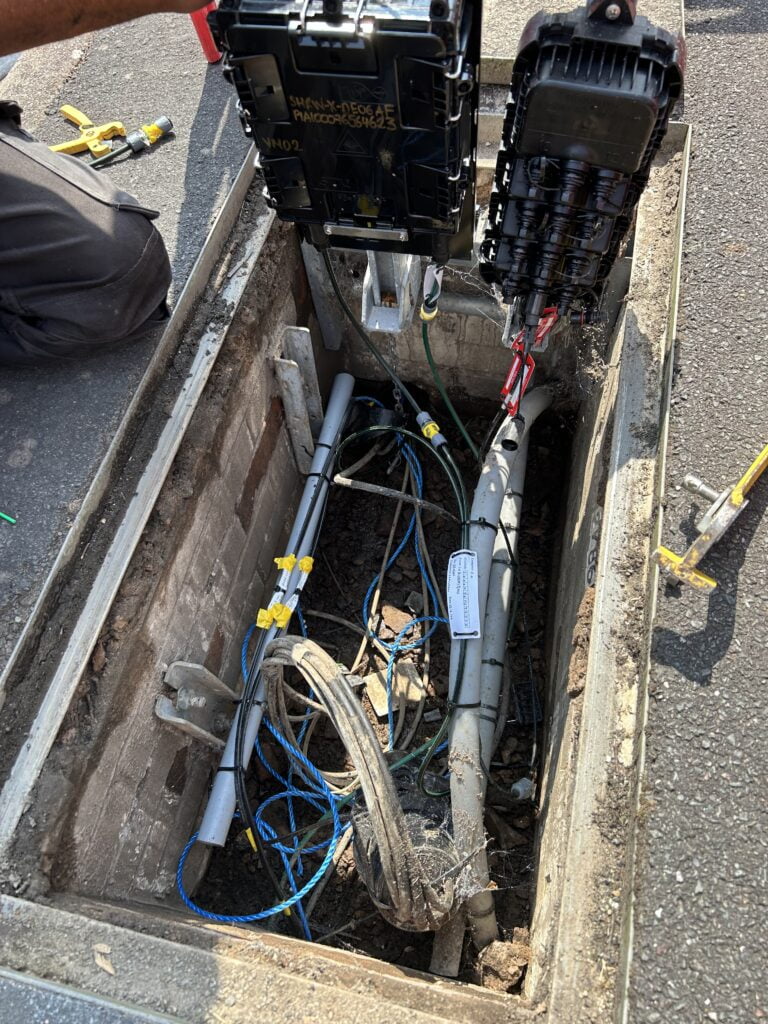
Pre install
The pre install which is meant to happen before the main install date is where contractors working on behalf of Virgin Media in my case Comex 2000 come and install the fibre from the street to the outside of your property.
On 26th June two Comex 2000 vans pulled up and one of the enginners knocked on my door to let me know they are here to do the pre install.
I showed them where I wanted the fibre installing which was into the garage.
The engineer explained that it would not be possible to run their fibre to the garage as they can’t run it round tight corners this becomes clearer later.
He did say that the VM engines will be able to take the fibre from the CSP box into the garage as their fibre cable is more suitable to go round corners etc.
The Comex 2000 enginners then set about installing the fibre with one engineer at the Chamber in the street (pictured above) and the other by my house where the BT duct comes up from the ground.
They start by using rods to see if the duct is clear and start pulling the straw though.
Comex 2000/ Virgin Media use a straw and blow method to get the fibre though where the fibre comes on a roll pre terminated and is very thin this is blown down the straw tube hence it’s not good with thought bends.
There was initially a little trouble getting the straw tube though the duct but they got it through in the end.
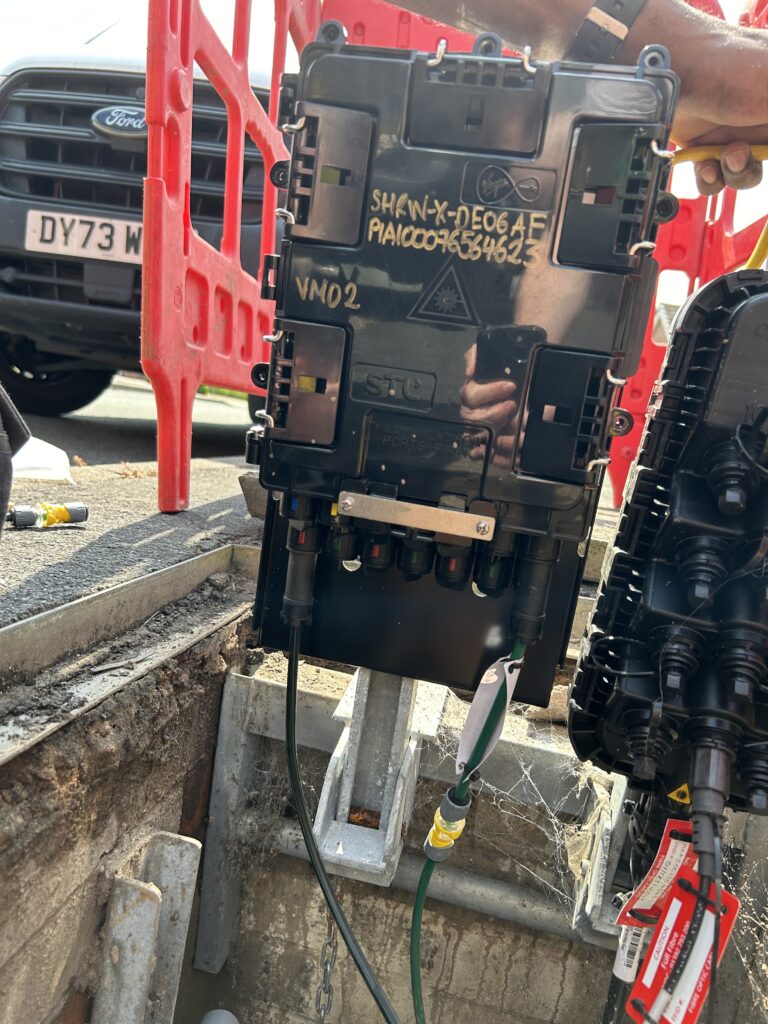
Once the straw was though the next stage is blowing the pre terminated LC APC fibre cable though from the house to the chamber.
Once the fibre made its way to the chamber the engineer connected it to a port on the CBT (pictured above the black box on the left the CBT on the right is FullFibres).
They then put a label on the straw which identities it as a VM line going to my house.
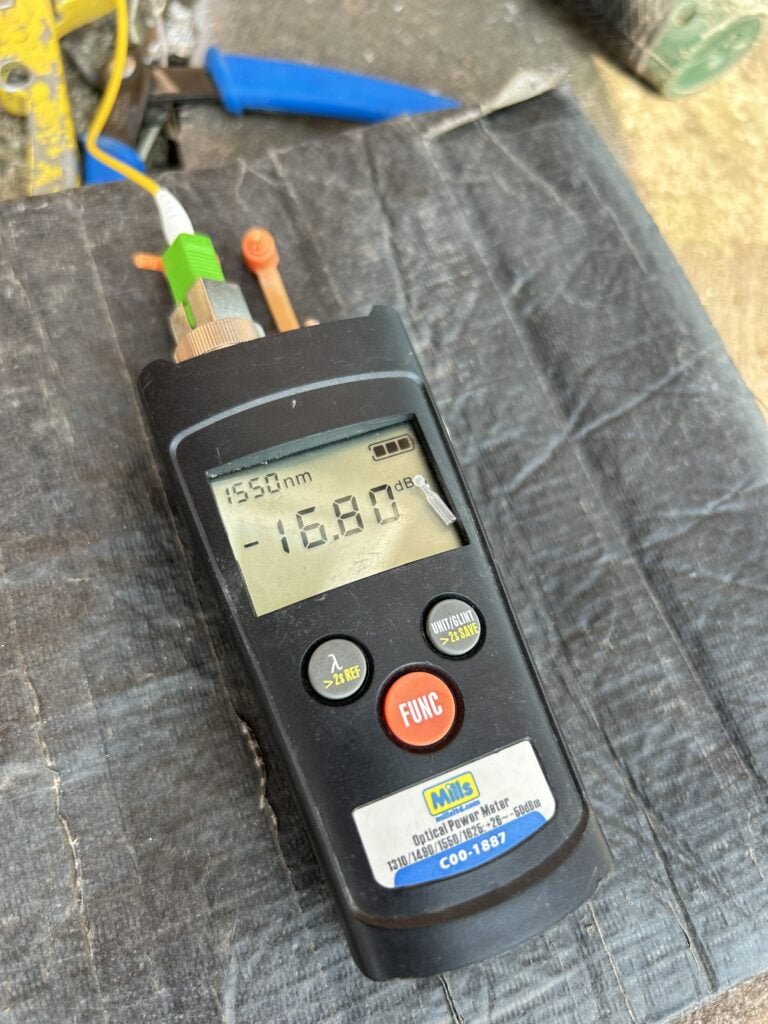
Now that the fibre is connected to the CBT the engineer at the house end hooks up the fibre to his light meter to ensure the fibre is working correctly and getting light levels within the accepted range.
luckily the light levels were good see picture above -16.8Db.
with fibre if the light level is too low then you get drop outs and if there too high it can damage the optics on each end of the fibre.
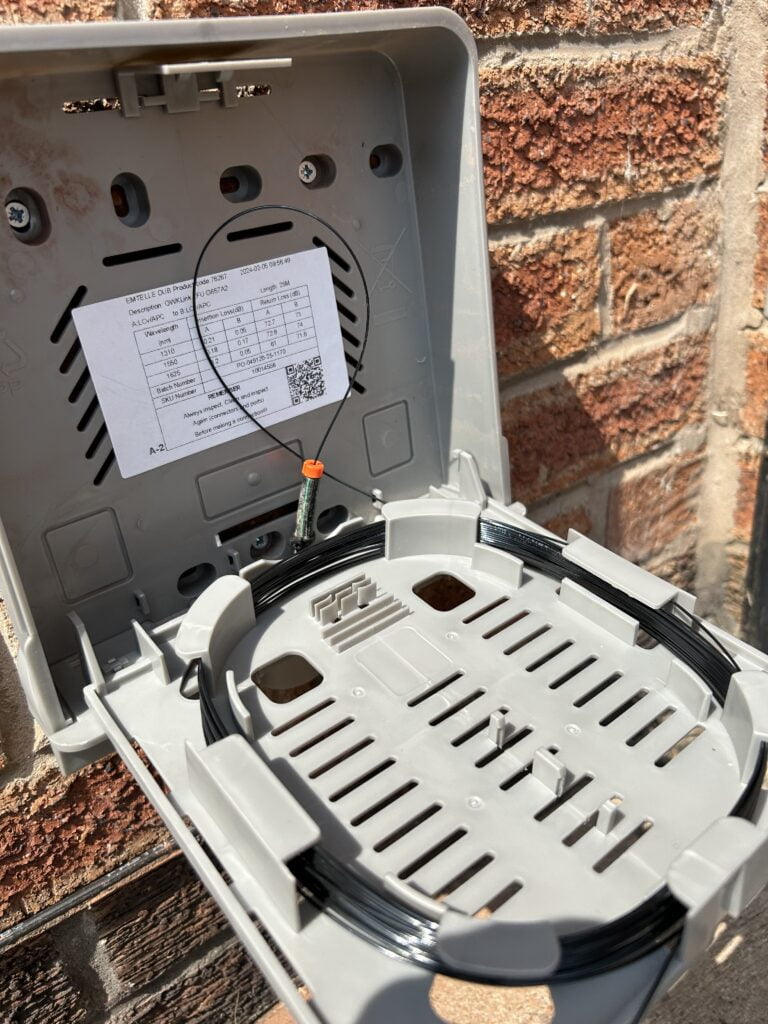
The engineers fit a fibre termination box onto the wall near to where the fibre comes out of the ground.
This is where the fibre from the street terminates and then connects to the fibre that runs inside the house.
As the fibre is pre terminated with a LC APC connector it does not require splicing instead there is a coupler connector ready for the internal fibre cable to plug into.
They wrap the excess cable round the tray inside the box.
I would like to thank the Comex 2000 engineers for a great job and for letting me take these pictures of their work.
Next will be the install by Virgin Media engineer scheduled to happen on 5th July keep an eye out for part 3 of this blog.
Don’t forget if you’re thinking about getting Virgin Media you can get £50 cashback using our link.
Thanks for this, really useful, Hope the install went well on the 5th and you have had time to test things out (modem mode?). Looking forwward to part 3 when you have the time.
Cheers Stephen, Part 3 is out now which covers the install and a review of the service.
Modem Mode is also covered tldr its broken but there is a way to bypass the hub 5x using a WAS-110 I’ve just published a blog covering this.